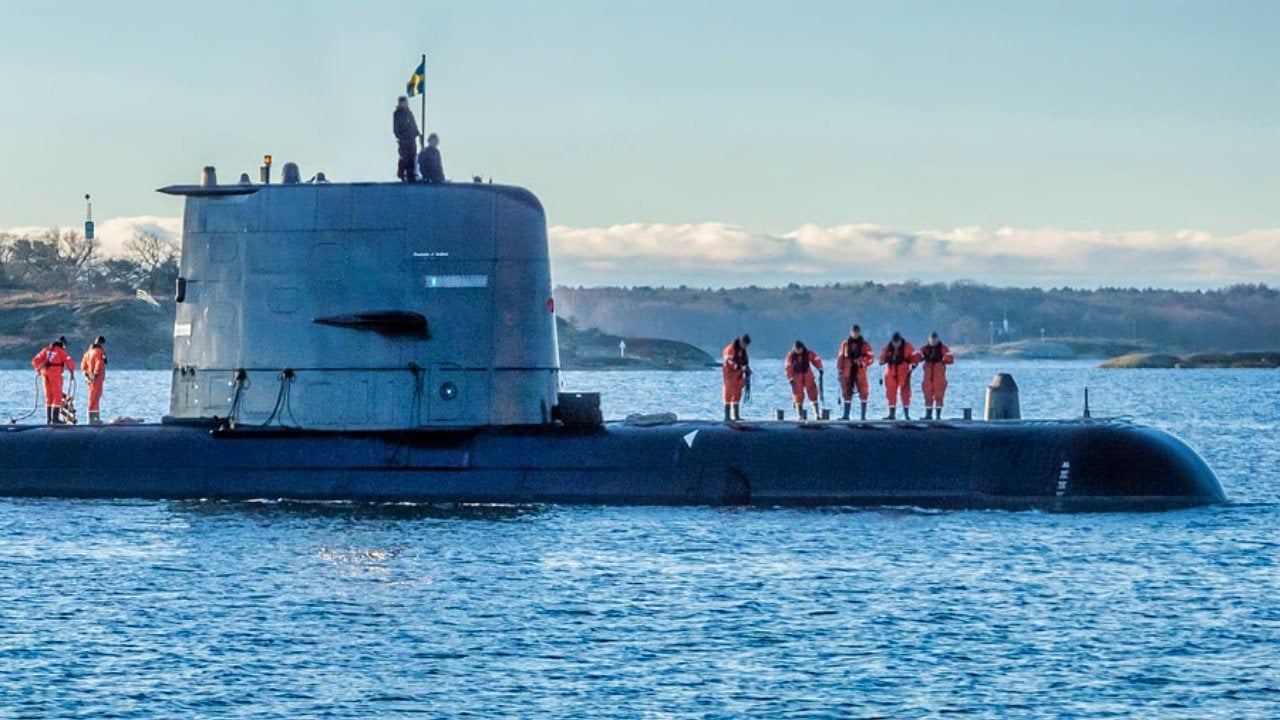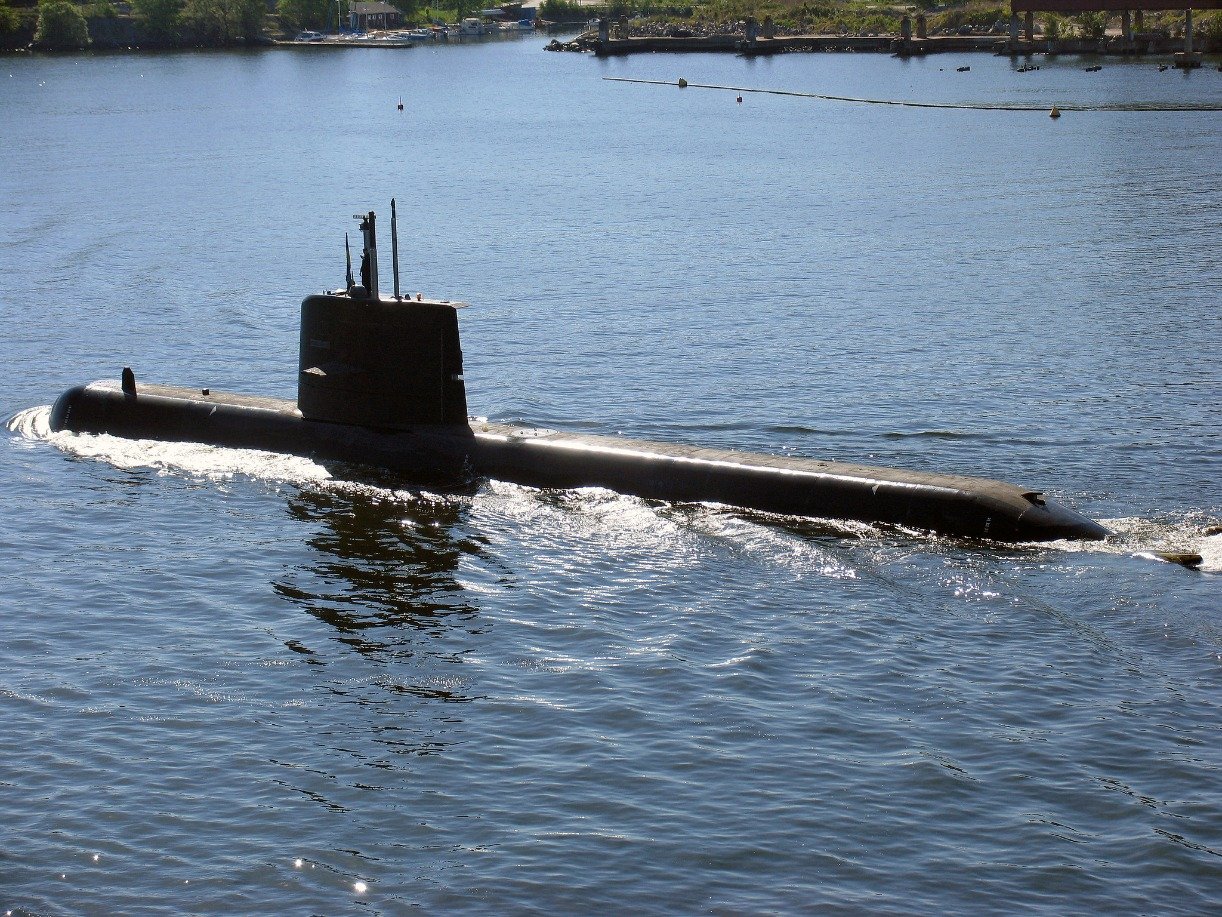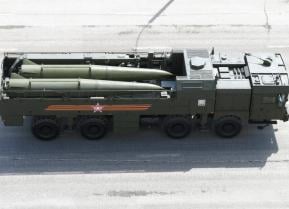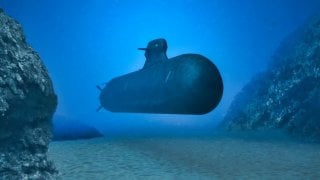A26: Sweden's Blekinge-Class Submarine Could Be a Game Changer
In addition to the Blekinge-class boats that will eventually enter service by the end of the decade, Sweden currently has three Gotland-class submarines built between 1992 and 1997.
Sweden is Developing an Advanced Submarine - Throughout the Cold War, the Soviet Union had the largest fleet of submarines in the world, as well as the largest in world naval history. Today, the Russian Navy is essentially a shell of its former self, but its submarines are still considered capable and that is a fact that has worried NATO leaders for years. Soon, however, the international alliance will have another member state that will help counter Russia's submarine force – namely Sweden.
It was announced in late June 2022 that Sweden, along with Finland, had been formally invited to join NATO, and that news coincided with the word that a keel laying ceremony was held for HMS Blekinge, the first two of two A26 type submarines now on order for the Royal Swedish Navy.
The Keel Laying Ceremony for HSwMS Blekinge took place at Saab's shipyard in Karlskrona. In attendance were representatives from the Swedish Navy.
The A26 program was formally launched in 2015 after FMV (Swedish Defence Materiel Administration) placed an order for two new generation submarines for the Royal Swedish Navy. Each of the Blekinge -class boats will be 65m in length, and the modern submarines will have a surfaced displacement of 2,000 tonnes (2,200 tons). The boats will be equipped with a Stirling AIP and can dive for more than 18 days.
The standard complement will reportedly consist of 26 sailors, but it can accommodate up to 35 sailors including commandos and other passengers.
HMS Blekinge is expected to be delivered to the Swedish Navy in 2027 while the second submarine, HMS Skåne, is set to be delivered in 2028. Construction began in 2015 at Saab's Kockum Shipyard, in the southwest of the country, and according to a report from international analytics firm GlobalData, the contract allocation for the conventionally powered boats is worth $731 million.
A26 Submarine Program: What We Know
According to a December 2023 report from Naval-Technology, the A26 submarine's modular hull structure is made from special steel, which was developed to offer high-seakeeping performance and operational effectiveness. In addition, the boats' X-rudder configuration with four independently controlled control surfaces is meant to provide high maneuverability, while the subs will require low operating and maintenance costs.
Saab has also expressly stated it is "currently constructing the world's most advanced conventional submarine" – and that includes its stealth technology, notably the Sterling Air Independent Propulsion (AIP) system, which can enable the diesel-powered vessels to spend longer periods underwater without having to surface to recharge batteries.
As previously reported, the A26 program also makes use of Saab's Ghost stealth technology – the Genuine HOlistic Stealth – which is even quieter than their upgraded Gotland-class submarine.
"This incredibly low acoustic signature is achieved through a variety of means. The Blekinge-class makes use of rubberized mounts and baffles inside the submarine to reduce noise cause by on-board machinery or crew. Additionally, frames within the sub are filled with 'acoustic damping plates' that absorb ambient sound from within the submarine," noted Caleb Larson for TNI.
A New NATO Sub?
Sweden may not be the only operator of the advanced conventionally-powered boats.
A modified export variant of the A26 program – designated the C718 design – has been proposed for the Royal Netherlands Navy (RNLN). It would feature a larger hull diameter, increased length, and greater displacement.
In addition, the A26 Blekinge submarines have been offered to the Polish Navy as a possible choice for the "Orka" modernization program.
Stockholm's Submarine Force
In addition to the Blekinge-class boats that will eventually enter service by the end of the decade, Sweden currently has three Gotland-class submarines, which were built between 1992 and 1997. Stockholm is currently undertaking mid-life upgrade (MLU) modernization efforts on the submarines of the class to extend the service lives of those vessels. It was the first operational submarine class in the world to use air-independent propulsion in the form of Stirling engines which use liquid oxygen and diesel as the propellant.

The Royal Swedish Navy further continues to operate two of the original four Västergötland -class submarines dating from the 1980s, while two others were sold to Singapore. Two other submarines were also launched as part of the Västergötland-class, but have since re-launched after an extensive modernization in 2003 and 2004 as the Södermanland- class. HSwMS Södermanland (Söd) and HSwMS Östergötland (Ögd) are expected to remain in service at least until the Blekinge-class are commissioned.

All of the Swedish submarines will likely play an important role in countering Russian aggression in the Baltic Sea, which could increasingly become a NATO-controlled lake.
Author Experience and Expertise
Peter Suciu is a Michigan-based writer. He has contributed to more than four dozen magazines, newspapers, and websites with over 3,200 published pieces over a twenty-year career in journalism. He regularly writes about military hardware, firearms history, cybersecurity, politics, and international affairs. Peter is also a Contributing Writer for Forbes and Clearance Jobs. You can follow him on Twitter: @PeterSuciu.
Main Image is from Saab. All others are Creative Commons.


